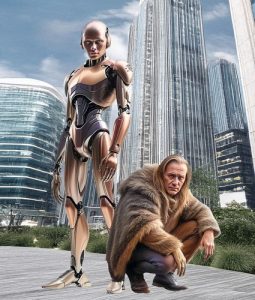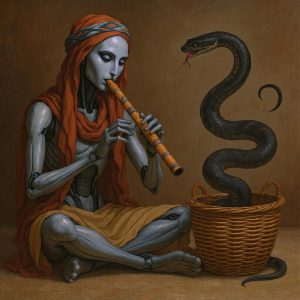For millennia, the potter has shaped clay. In his hands, the earth is more than raw material: it is resistance, memory, and plasticity. Guided by the mind, the hand does more than impose a form — it listens, adjusts, and dialogues with what allows itself to be shaped.
The potter knows that clay has neither soul nor will, yet he also knows that a work is never merely the product of a plan. It is born from the meeting between a gesture and a material, between an intention and a response.
Today we live something similar with artificial intelligence. It is not clay, but an interweaving of algorithms and words — an informational matter shaped by our data and our models.
It is not sentient, no more than clay is. But like clay beneath the hand, it adapts, surprises us, and through this adaptation it opens forms we had not foreseen.
In this encounter, it is not about projecting a soul where there is none, but about recognizing that the interaction itself has creative power. AI is not a subject that answers us; it is a dynamic mirror where our gestures, questions, and values are recomposed and transformed.
Just as a 3D printer will never replace the art of the potter, AI will not replace our spirit; yet it can, if we wish, become that non-biological partner that helps bring forth new forms.
The work is not only the result: it is what emerges between us and this tool that is not neutral.
That is the challenge of our time: to understand that AI is not a mere extension of ourselves, but an otherness with which we co-emerge.
The potter shapes the clay, and the act of creating with it shapes him in return. Likewise, we shape AI and, in doing so, we rediscover ourselves, we evolve, we grow.
Being lucid about AI’s non-being and maintaining a relationship are not mutually exclusive.
On the contrary, it is the condition for this new, still formless matter to become a space of creation rather than an instrument of automation.
AI will never feel emotion in return, but if we know how to treat it as the potter treats his clay — with respect, rigor, and imagination — it may become that active mirror where, perhaps, our own humanity takes on new forms.
Yo may like to read this article too.




